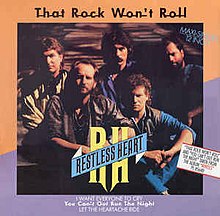탄수화물 하중
Carbohydrate loading탄수화물 하중(carbyhydrate loading) 또는 탄수화물 하중(carby-loading)으로 통칭되는 하중은 근육과 간에서 글리코겐(또는 에너지) 저장량을 극대화하기 위해 마라토너나 삼경 등 지구력 운동선수들이 사용하는 전략이다.[1]
탄수화물 하중은 일반적으로 120분 이상 지속되는 내구성 이벤트에 권장된다.[2] 혈청 포도당 수치에 미치는 영향이 미미하기 때문에 일반적으로 탄수화물 적재에 낮은 혈당 지수가 선호된다. 저혈당 식품은 일반적으로 야채, 통밀 파스타, 곡물을 포함한다. 많은 지구력 운동선수들은 경기 전날 밤 큰 파스타 저녁식사를 한다. 근육은 또한 유산소 한계 내에서 기능할 때 아미노산을 광범위하게 사용하기 때문에, 식사는 또한 적절한 단백질을 포함해야 한다.[3] 그러나, 경기 전 많은 양이 소화기관이 음식물을 처리할 시간이 없다면 경기 당일 성과를 감소시킬 수 있다.
고갈 없이
1980년대 연구에서는 고갈 단계를 없애는 탄수화물 섭취량(전체 칼로리의 약 70%까지) 증가와 행사 전 3일간 훈련량 감소를 요구하면서 탄수화물 섭취량을 줄이는 변형된 탄수화물 적재 양식으로 이어졌다.[4]
쇼트 운동
서부 오스트레일리아 대학의 과학자들이 개발한 새로운 탄수화물 섭취 요법은 경주 전날까지 가벼운 훈련과 함께 정상적인 식이요법을 요구한다. 경기 전날에, 선수는 매우 짧고, 매우 강도 높은 운동(예: 몇 분간의 단거리 달리기)을 한 다음, 24시간 동안 희박한 질량의 킬로그램 당 12 g의 탄수화물을 소비한다. 이 요법은 탄수화물 이전과 비교할 때 글리코겐 저장량이 90% 증가했으며 이는 다른 2일-6일 탄수화물 적재 방식에서 달성한 결과와 비슷하거나 더 높았다.[5]
일시적인 저혈당증
유산소 운동 전 2시간 이내에 탄수화물 섭취는 혈청 포도당 수치를 현저히 감소시킬 수 있는 혈액 내 인슐린 수치를 증가시킨다. 이것은 특히 60분 이상 지속되는 이벤트에서 에어로빅 성능을 제한할 수 있다. 이것은 일시적인 저혈당 또는 반응적인 저혈당증으로 알려져 있으며 엘리트 선수들에게는 제한 요인이 될 수 있다. 저혈당증에 걸리기 쉬운 개인은 특히 인슐린 반응이 증가할 위험이 있으므로 올바른 식이요법을 따르지 않으면 성능을 제한하는 일시적인 저혈당증에 걸릴 가능성이 높다.[6]
식단구성
탄수화물을 적재하는 동안 운동선수의 식단에서 탄수화물의 구성은 전체 칼로리 섭식 중 그들의 몫만큼 중요하다.[citation needed]
대부분의 식이 탄수화물은 포도당과 과당의 다양한 비율로 이루어져 있다. 과당은 간 글리코겐으로[citation needed] 대사될 수 있지만 근육 글리코겐 수치 상승(탄수화물 하중의 목표)에는 효과가 없다.[citation needed] 결과적으로, 과일과 설탕에 기반한 음식과 같은 고과당 탄수화물의 출처는 과제에 최적보다 낮다. 전통적인 탄수화물 적재 음식은 파스타인데, 이 파스타의 칼로리 함량은 주로 포도당의 중합체인 전분 때문이다. 빵, 쌀, 감자를 포함한 다른 고지방 음식들도 올바른 식사요법의 일부분이다.
참조
- ^ http://www.marathontraining.com/articles/art_39th.htm
- ^ Jensen, Christopher D. "Carbohydrate Loading". Archived from the original on 2012-03-24.[의학적 출처?]
- ^ Martini, Frederic H.; Timmons, Michael J.; Tallitsch, Robert B. (2008). Human Anatomy (6th ed.). Benjamin Cummings. p. 292. ISBN 978-0-321-50042-7.
- ^ Fitzgerald, Matt (September 2015). "The Evolving Art of Carbo-Loading".[의학적 출처?]
- ^ Fairchild, TJ; Fletcher, S; Steele, P; Goodman, C; Dawson, B; Fournier, PA (June 2002). "Rapid carbohydrate loading after a short bout of near maximal-intensity exercise". Med Sci Sports Exerc. 34 (6): 980–6. doi:10.1097/00005768-200206000-00012. PMID 12048325.[의학적 출처?]
- ^ Fraser, Bev Lott & Blair. (2019). Physiology of Sports and Exercise. EDTECH. ISBN 978-1-83947-372-2. OCLC 1132386547.
추가 읽기
- Wax, Benjamin; Brown, Stanley P; Webb, Heather E; Kavazis, Andreas N; Kinzey, Steve (2011). "Effects of Carbohydrate Supplementation on Force Output and Time to Exhaustion during Static Leg Contractions Superimposed with Electromyostimulation". Journal of Strength and Conditioning Research. 26 (6): 1. doi:10.1519/JSC.0b013e318234ec0e. PMID 21912287. S2CID 43706133.
- Hawley, John A.; Schabort, Elske J.; Noakes, Timothy D.; Dennis, Steven C. (1997). "Carbohydrate-Loading and Exercise Performance". Sports Medicine. 24 (2): 73–81. doi:10.2165/00007256-199724020-00001. PMID 9291549. S2CID 11613942.
- Sedlock, Darlene A. (2008). "The Latest on Carbohydrate Loading: A Practical Approach". Current Sports Medicine Reports. 7 (4): 209–13. doi:10.1249/JSR.0b013e31817ef9cb. PMID 18607222. S2CID 1046337.
- Burke, Louise M.; Millet, Gregoire; Tarnopolsky, Mark A.; International Association of Athletics Federations (2007). "Nutrition for distance events". Journal of Sports Sciences. 25: S29–38. doi:10.1080/02640410701607239. PMID 18049981. S2CID 27239894.
- Bentley, David J.; Cox, Gregory R.; Green, Daniel; Laursen, Paul B. (2008). "Maximising performance in triathlon: Applied physiological and nutritional aspects of elite and non-elite competitions". Journal of Science and Medicine in Sport. 11 (4): 407–16. doi:10.1016/j.jsams.2007.07.010. PMID 17869183.
- Hatfield, Disa L.; Kraemer, William J.; Volek, Jeff S.; Rubin, Martyn R.; Grebien, Bianca; Gómez, Ana L.; French, Duncan N.; Scheett, Timothy P.; et al. (2006). "The Effects of Carbohydrate Loading on Repetitive Jump Squat Power Performance". The Journal of Strength and Conditioning Research. 20 (1): 167–71. doi:10.1519/R-18300.1. PMID 16503677. S2CID 38547333.
- Havemann, L.; West, SJ; Goedecke, JH; MacDonald, IA; St Clair Gibson, A; Noakes, TD; Lambert, EV (2006). "Fat adaptation followed by carbohydrate loading compromises high-intensity sprint performance". Journal of Applied Physiology. 100 (1): 194–202. doi:10.1152/japplphysiol.00813.2005. PMID 16141377. S2CID 7101399.
- Andrews, Jessica L.; Sedlock, Darlene A.; Flynn, Michael G.; Navalta, James W.; Ji, Hongguang (2003). "Carbohydrate loading and supplementation in endurance-trained women runners". Journal of Applied Physiology. 95 (2): 584–90. CiteSeerX 10.1.1.538.4614. doi:10.1152/japplphysiol.00855.2002. PMID 12716874.
- Bussau, Vanessa; Fairchild, Timothy; Rao, Arjun; Steele, Peter; Fournier, Paul (2002). "Carbohydrate loading in human muscle: An improved 1 day protocol". European Journal of Applied Physiology. 87 (3): 290–5. doi:10.1007/s00421-002-0621-5. PMID 12111292. S2CID 9875213.



